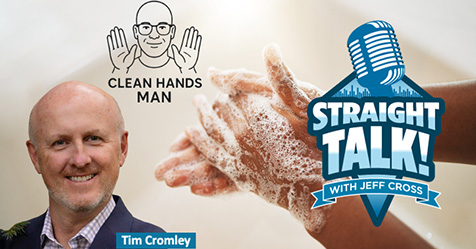Health care facilities consistently are filled with vendor employees performing necessary work. This includes elevator technicians, painters, flooring contractors, plumbers, electricians, cleaning crews, and more—and many of these contractors do not have functional knowledge of how their work can negatively affect an immune-compromised patient.
Without proper training on how infections can occur in health care settings, vendors often make common mistakes and fail to realize the impact of their actions on patients in the facility. Patients aren’t the only people in health care facilities to be affected by the lack of infection control best practices; vendors themselves are at risk when they are unfamiliar with techniques and procedures required to properly handle materials and surfaces that can support dangerous fungi and bacteria.
Cleaning technicians contracted by health care organizations play a critical role in today’s hospitals; the typical focus on their responsibility of keeping a health care facility clean provides only a limited view of how important the cleaning team is to the entire facility’s mission. With the emergence of drug-resistant organisms and the abundance of specialized products used in hospitals, a contracted cleaning team needs to be highly educated and armed to help reduce health care-associated infections (HAIs), improve patient satisfaction scores, and patient outcomes.
HAIs spread when viral, bacterial, and fungal pathogens become airborne, waterborne, or transferred through surfaces in a health care setting. Risks of acquiring HAIs can stem from equipment or instrument negligence by health care employees or surfaces that patients or other facility occupants contact.
Across the world, proactive contract cleaners are partnering with infection control teams to reduce the risks of HAIs and combat the global problem. According to the U.S. Centers for Disease Control and Prevention (CDC), in the United States alone, 1.7 million people get a secondary infection—some 75,000 of which are fatal—and the odds of acquiring an HAI increase with the time a patient spends in a hospital, which means increased exposure potential for cleaning technicians.
In an effort to reduce the overwhelming number of HAIs that occur annually, both the CDC and Centers for Medicare and Medicaid Services (CMS) recommend all personnel working in a health care facility, including cleaning technician vendors, be aware of infection control mitigation methods. All vendors working in the facility should follow these preventative measures to reduce the impact of vendor-related HAIs in health care systems and maximize patient health.
- Ensure workers entering the site are clean.
Before entering a job site, it is imperative that contracted vendors remove debris from their clothing and shoes. Entering a health care facility covered in the smallest amount of dust or other harmful, bacteria-laden debris can expose an immune-compromised patient to a deadly HAI. - Keep cleaning materials in dry areas to prevent mold.
Mold grows quickly in a moisture-filled environment and travels through the air. Patients exposed to mold can acquire serious health issues. Before using any cleaning materials, check the storage area for high humidity or water damage. - Disinfect all high-touch surfaces.
Many pathogens connected to HAIs survive on various surfaces such as waiting room furniture, bedside rails, remotes, and light switches. As a result, frequently touched surfaces play a key role in transmitting infections between people. Disinfecting surfaces is vital in infection prevention planning. Virtually every patient, visitor, and associate touches or comes into contact with some surface in the hospital environment. Even though complete isolation is impossible, keeping patients safe and preventing visitors from taking away any souvenir organisms to share at home is critically important. - Clean all equipment thoroughly on a daily basis.
Hospitals are constantly filled with vendors who unknowingly carry debris and deadly microorganisms that can be transferred onto surfaces or throughout the air. Cleaning all equipment, including mobile medical tools and nurses’ stations, thoroughly and daily is extremely important to preventing HAIs. - Understand CDC and CMS recommendations.
Vendors should have knowledge of recommended or required infection control training to improve hospital efficiency. The cleaning staff should help themselves and other vendors see their impact on the entire facility. - Integrate a waste management program.
Clearly understand the recommended procedure for controlling and disposing of biological, chemical, and radiological materials and waste to minimize the risk of HAIs and ensure compliance with all federal, state, and local regulations. - Implement facility-wide infection control training.
Participating in a hospital-wide training model that can be accessed 24/7 for all vendor staff ensures staff are educated to make a difference and improve patient care. Address issues that health care staff members encounter on a daily basis to eliminate reoccurrence. Every vendor employee that enters the hospital should complete the training courses and learn about their role in HAI prevention. - Monitor all cleaning efforts.
Measure cleanliness with three basic quality-assurance monitoring tools or methods: directly observe each team member to ensure accuracy on a visual checklist; use an adenosine triphosphate (ATP) bioluminescence system that objectively measures the amount of bioburden on a surface; or apply an invisible fluorescent mark before cleaning, and then evaluate after cleaning.
To reduce the risk of HAIs, all cleaning vendors should become familiar with and follow these crucial tips. Each year, HAIs claim 75,000 lives—that’s 205 deaths every day.
Five percent of all hospital stays result in re-admissions due to infections that patients acquire in a health care facility. Generally, HAIs are preventable and often caused by hospital conditions or human error. Most patients and visitors entering a health care facility have no idea how complex the role of the cleaning staff is and how it plays a key role in keeping the patients safe and comfortable.
Once a facility’s internal and external teams learn about the impact of HAIs and their role in minimizing the spread of fatal infections, the facility is one step closer to becoming safer, more efficient, and most importantly, saving patients’ lives.




